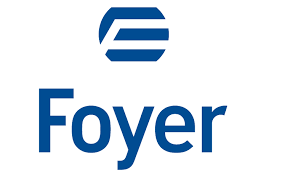

Project Title: Predictive Maintenance for Vehicles (co-funded by an FNR Bridges Grant)
Car maintenance has traditionally been driven by OEM-centered maintenance programs, designed in a way that vehicles of a given type with a given engine should follow scheduled preventive maintenance events in order to guarantee a high level of availability and longevity. However, it is known that for a given vehicle, being used in different conditions and intensities may make those pre-scheduled events come either too early or, in the worst case, too late, leading to breakdowns with their associated loss of productivity. Throughout this project, we will conduct research on the usage of connected car and augmented telematics data to predict vehicle health status and potential breakdown events. Through an industrial collaboration, we intend to design and develop a number of predictive models for different vehicle systems and subsystems, integrating them into the industrial partner’s platform for real usage.
Project Title: Luxembourg in High Definition
To get a glimpse of the potential benefits of having access to a high-definition digital map of a city, one just has to observe the impact the Internet has had over the years on individuals and societies. Not only did the Internet democratize access to information, but it also created a new global marketplace and made all markets more efficient connecting buyers and sellers. It was also a key enabler for new businesses such as Uber and Airbnb, that have transformed transportation and travel respectively. The Internet ecosystem now affects the economy in ways that were completely unimaginable just a few years ago.
An HD digital map of a city will be a similar ubiquitous backbone of the future. While several applications of HD Maps such as those in Autonomous Vehicles, Autonomous Delivery Robots, and Smart City initiatives are already obvious, the map also serves as a foundation on which additional contextual information can be constantly layered from different sources, transforming the map into a living digital asset that will power the innovations of tomorrow.
The aim of this project is to create a high-definition digital base map of the city of Luxembourg and the digital cross-border testbed area. This digital base map will contain features that will have 15-20 cms absolute georeferenced accuracy and will enable autonomous vehicle navigation including side-walk navigation for delivery robots.
Project Title: Privacy Preserving Risk Assessment of Human &
Automated Driving using Sensor Fusion
The shift to automated driving will be gradual and steady, as each year cars are outfitted with more sensors and systems to improve driver performance and safety. These advances, collectively known as ADAS (advanced driver-assistance systems) include a number of developments from autonomous vehicle research that have already made a debut on public roads, such as adaptive cruise control, automatic parking, and much more. The 360Lab’s collaboration with Foyer Assurances Luxembourg investigates how these steps toward fully automated driving are already changing the automotive insurance market.
Nationally-funded Research Projects
FNR Bridges

Project Title: Connected Dynamic Insurance
Industrial Partner: Foyer Assurances
Cars are getting increasingly connected. In the past, insurance telematics products have been based on retrofitted tracking systems, commonly called “Black Boxes”, and used to calculate insurance premiums based on simplistic metrics, such as the distance driven. Those systems however have drawbacks. First, the users do not like to install such devices in their private cars, as they are usually perceived as invasive. Second, the cost of the device is usually significant, hence reducing the margin for the insurance provider who often covers their cost. In Europe, as of March 2018, every new vehicle has to be equipped with the so called “eCall” system, which allows to locate and communicate with a car if a crash is detected. Many car manufacturers are adding additional services on top of eCall to generate new revenue streams. This project will make use of such services to retrieve telematics data from connected vehicles (with the consent of the owner) to develop and test an insurance telematics product with our partner Foyer Assurances Luxembourg.
FNR Industrial Fellowship

Project Title: Machine Learning for Risk Assessment in Semi-autonomous Vehicles (MASSIVE)
Industrial Partner: Foyer Assurances
Individual PhD grant for François Robinet
In the next decade, the increased number of assistive systems and the advent of semi-autonomous vehicles are expected to lead to a reduction of both the frequency and magnitude of road accidents, which will force insurance companies to adapt their offering. One option is to use telematics to monitor drivers and reward safe-driving habits by lowering premiums. Previous attempts have generally limited themselves to using sensors that are readily available on customers’ smartphones, such as GPS, but the collection of such data cannot capture the complexity of real-world driving scenarios.
In this project, we collaborate with Foyer Assurances SA to research novel real-time risk assessment techniques by leveraging more advanced sensors. Our research group has recently built a prototype car for driverless mobility research, which is instrumented with a plethora of such sensors: cameras, LIDAR, differential GPS, driving control signals, etc. Our aim is to collect driving data in a wide range of realistic scenarios, and to combine it with historical insurance claim datasets recorded by Foyer. Using this data, we will be able to design human-understandable features for safe driving, and to train machine learning models to infer these features from raw sensor measurements. Our risk assessment pipeline will finally be set up on small embedded computers, to be tested and evaluated on board of a fleet of cars from volunteering employees from Foyer Assurances SA.
FNR AFR

Project Title: Infrastructure assisted cooperative driving strategy for connected vehicles (ACDC)
Individual PhD grant for Faisal Hawlader
Vehicle-to-Everything (V2X) communication has evolved rapidly over the past few years, offering promising applications ranging from the enhancement of road safety to comfort. One of those is the cooperative perception system (CPS), where vehicles and roadside infrastructures exchange sensory information using the V2X network to maximize the perception horizon without the need for potentially expensive sensors. V2X can be performed between participants on the cooperative driving ecosystem for dynamic real-time information exchange. With the recent deployment of low latency and high throughput network technologies such as 5G in many metropolitan areas sharing and processing large amounts of sensor data between vehicles, infrastructures, and beyond is becoming a realistic option. Hence, sensor data sharing could easily be the next key enabler for the Connected and Automated Driving (CAD) vision to minimize existing driving challenges while increasing the awareness horizon beyond vehicle local sensing capacities. However, a CPS can also generate redundant data, and data transmission comes at the cost of processing overhead. Therefore, any novel CPS applications must be tested to assure their reliability. Still, trials on actual vehicles are uncommon due to the complexity, cost, and risks associated with the experiments. Simulation appears to be an excellent alternative to address this issue, and the research community frequently relies on it. In this context, the simulation environments should be as realistic as possible and mimic the challenges of an actual deployment. So far, no existing framework combines synthetic car sensor data with the realistic network simulation needed to evaluate CPS. This Ph.D. project, “Infrastructure assisted cooperative driving strategy for connected vehicles (ACDC),” will focus on designing a framework that allows to validate CPS solutions and determine how sensor data could be efficiently shared among vehicles and infrastructures using V2X facilities. We suppose that such a platform will open many interesting research avenues. Another goal of the project is to explore novel distributed learning techniques to distribute sensor information processing among vehicles, infrastructures, and beyond and find the best trade- off between data processing and transmission policies while ensuring low latency and high reliability.
FNR Bridges

Project Title: Always Up-To-Date High Definition Map (Automap)
Industrial Partner: Civil Maps
Digital High Definition (HD) Maps represent the world in an unprecedented centimeter-level precision. They are a key component used by self-driving cars to understand their local environment, perform an accurate localisation and estimate a drivable path. The HD map is commonly generated by dedicated mapping vehicles equipped with high precision sensors including real-time kinetic (RTK) global navigation satellite systems (GNSS) and light detection and ranging (LiDAR). This map is reliable if and only if there are no changes after the HD map has been generated. However, that is not the common scenario since driving environments are highly dynamic and seasonal changes happen regularly. For this reason it is mandatory to update HD maps frequently. We are proposing a low cost change detection and update system feature for HD maps used for autonomous driving.
The aim of this project is twofold: 1) Develop and Deploy a change detection and update system in a HD map. 2) Generate a ground truth HD map for validation of the proposed system of the metropolitan area of Luxembourg City with our partner Civil Maps.
FNR NCER FinTech

Project Title: Robotic Process Automation in Anti-Money Laundering Compliance (RoboComp)
UL Partners: SnT (SEDAN / 360Lab & CVI2) and FDEF
The anti-money laundering (AML) EU policy imposes a number of compliance obligations on financial institutions, in particular due diligence regarding the identity of the customer and reporting obligations requiring these obliged entities to assess the risk of money laundering linked with concrete clients and concrete transactions.
The initial approach introduced in the 1990s with the first AML Directive was rule-based and left little space for banks’ own approaches, it was a rather “tick-the-box” job. For instance, if the characteristics of a financial transaction met the conditions specified in the rule, the financial institution was in principle obliged to report the transaction to law enforcement. This approach gave certainty to the financial institutions and the duties were relatively easy to comply with, as the assessment was largely formal. However, this approach resulted in reporting relatively few transactions that qualified as money laundering and significant over- reporting of useless information. It was predictable, therefore, easy to circumvent by agile money-launderers.
In order to challenge the shortcomings of that approach, the 3rd AML Directive introduced a new risk-based approach which is now reinforced by the 4th and the 5th AML Directives. The risk assessment is conducted in concreto according to a list of criteria (defined by the European Supervisory Authorities). The obliged entities must design an AML model which prevents the use of financial structures for money laundering. Financial institutions (and other obliged entities) should adopt a risk management process to identify and manage money laundering risks in a flexible and less predictable way. In this model, the obliged entities are co-regulators and co-enforcers: the legislator delegates to the obliged entities both the design and the implementation of a model of AML control.
That approach puts a heavier burden – organisational, financial and linked with the risk of sanctions – on financial institutions. One of the main ways for financial institutions to deal with it is through automatization of the due diligence process (Robotic Process Automation, RPA), which has several advantages, such as: cost limitation, increased effectiveness, elimination of monotonous work so that employees can focus on high value tasks; but it also presents challenges, such as lack of transparency and even more cumbersome possibilities of review for a customer considered suspicious. It is that process that this project aims at studying from the technological and legal point of view and contributing to its improvement.
FNR Pathfinder

Project Title: DigitalUs (part 1)
Everyday tons of personal digital data is being generated and stored on social media and other platforms such as forums and review sites, and the rate is growing exponentially. It becomes increasingly important to manage, protect and interact with this data by providing a comprehensive overview of our digital self. The aim of this project is to validate a technology developed at SnT that allows to crawl and combine various data sources and find a suitable market for it.
FNR Proof-Of-Concept

Project Title: DigitalUs (part 2)
Every day, vast amounts of digital data is being generated on the Internet. This trend is increasing exponentially. A large amount of this data contains personal information and is publicly accessible. This data is generally distributed among many different data repositories (Social Media, Blogs, News Articles, etc.). Having access to a single repository does usually not provide any useful information, however combining all those data sources for one unique individual allows to create a public digital profile that includes commercially exploitable information. The AI- based technology that will be tested during this project allows to reliably match various public data-sources for any given person to compute a comprehensible digital profile. There are multiple approaches on how such a technology can be commercialized. A market study has been conducted as part of a Pathfinder project. The outcome suggests to start with a Business to Business (B2B) model as many companies are relying on personal data to provide new services. In this project we will therefore closely collaborate with a local insurance company, that would like to rely on digital profiles to propose a new kind of cyber-insurance to their customers.
EU-funded Research Projects

Project Title: TERMINAL
Luxembourg’s strong commuter culture and geographic location also make it a compelling laboratory for exploring the future challenges and opportunities of automated driving in Europe. The project TERMINAL, funded by the ERDF as part of the INTERREG V A Greater Region program, is already bringing together municipalities, researchers, and businesses from across the greater region to explore the possibility of an automated cross-border shuttle bus system. The three-year project will culminate in a six-month test of an electric automated minibus, which will operate a route across the German-French border in 2020.
As part of the project, the 360Lab will be collecting and analysing data from a number of Luxembourg’s own cross-border bus routes.
Visit the project website for more information.



